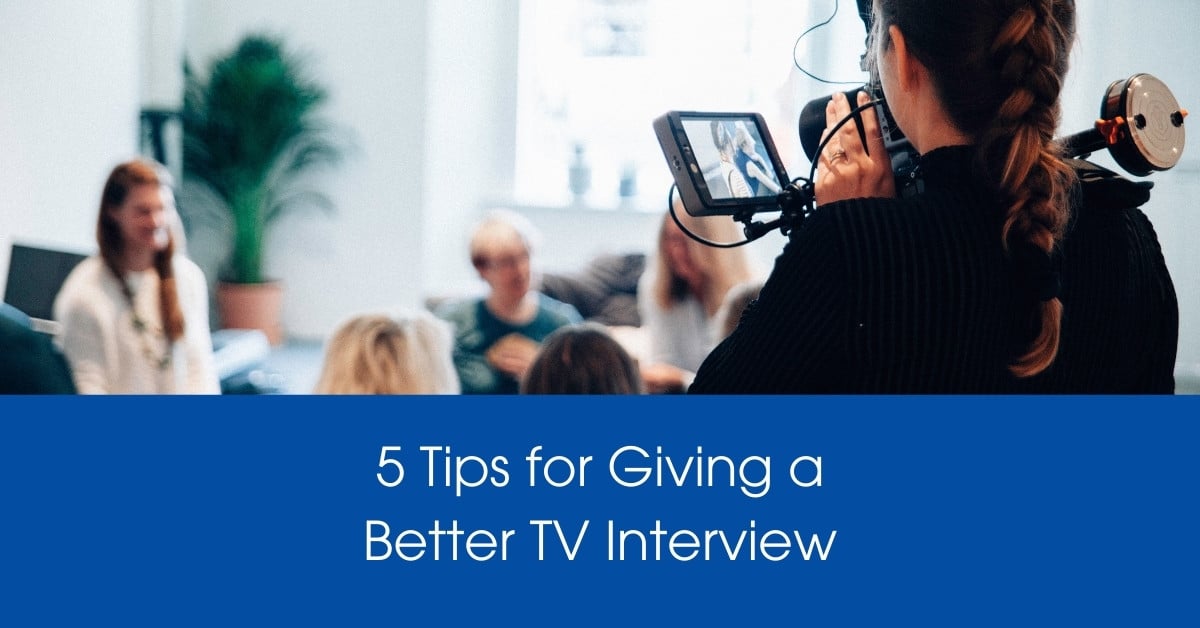In my first blog article, PR 101, I outlined what PR is and how, when it works, securing media coverage is the end goal. However, GCM’s job is far from over once a media outlet shows interest in setting up an interview with our client. That’s when I switch my mindset from the pitch to the win.
For any interview, messaging is the most important thing, but for a TV interview, there are many more elements that an interviewee needs to consider. Sure, most people know not to gesture too much with their hands or to avoid filler words such as “like” and “um” when they speak, but I have a few insider tips to share from being on the other side of the camera and coaching my clients on how to look and sound their BEST for their TV interviews.
1. The Look
Get ready for some tough love here. Yes, the message is the most important, but no one is going to hear you if you are looking disheveled or have lipstick on your teeth. You must look your best to be on TV: showered, clean-shaven, made up, and hairstyled. You will come across as professional and put together.
Beyond that though, you also need to choose your clothing with some things in mind. Stick to business casual or professional outfits with solid colors. Intricate patterns or stripes tend to “vibrate” on screen and can be distracting. However, all white or all black is not a good idea either because the absence of color is not visually pleasing to the eye. Lapels and collars are convenient for hooking a mic to, and the journalist will appreciate it!
2. Talking Points
At GCM, we provide our clients with talking points before each interview. These are a few key messages that you need to communicate during the interview. Talking points may even include some interesting facts and anecdotes. To keep the tone conversational and relaxed, I never recommend memorizing an entire script of what to say, but you should know exactly how to pronounce specific titles, business names, campaigns, etc. And you need to know the Five W’s about your interview topic: Who, What, Where, When, Why.
The talking points will only get you so far, though. You have to take them and rehearse, practice, memorize! GCM offers media coaching, but ultimately, it’s YOU saying the words that come out of your mouth. The more you practice, the more comfortable you will feel.
3. I’m Not Sure What to Do with My Hands
The words we say are important, but they only count for about seven percent of our communication. A massive 55 percent of our communication comes from body language, and 38 percent from vocal tone and expression.
If standing, have your arms at your side or one hand in a pocket. Planting one foot slightly in front of the other will actually help you avoid swaying. Should you gesture, do so naturally and not expansively. Keep gestures small and in front of you, and avoid sudden body movement. Basically, you want to find the perfect balance between natural gestures and stillness.
We also can’t forget to remind you about your overall posture. I know you will probably be nervous, but don’t let those shoulders tense up around your ears. Take a deep breath, roll your shoulders back, and relax as much as you can. A pinched neck and tense upper body will read as anxious, annoyed, or even defensive on screen.
4. Take It Again
If you find yourself caught up in the “umms,” mispronouncing a word, talking in circles, or stuck in your head, simply ask the journalist if you can take it again—as long as you’re not live on air! Asking for time to take another shot at answering their question will not only give you the opportunity to get it right, but it will be easier for the journalist to edit for the segment. Breathe, reset, think, and take it again.
5. We’re Just Talking
As simple as it sounds, imagine you are having a conversation with the interviewer. Keep eye contact with them, and never look directly into the camera unless told to do so. When speaking with the reporter, avoid overlapping their questions: just like you would when speaking with a friend, wait until the question is finished to begin your answer.
Even if you think you’ve already answered a question from a previous answer, treat every question like a new question. Go back to your talking points in your mind, and find a new bit of information you can share with the journalist.
Final Thoughts
If you follow my tips, I promise you will feel like the success you are after the interview is over, and the reporter will be impressed, too! And here is a bonus tip: be sure to thank the journalist! On behalf of our clients, we always send a thank you email or note to the journalist after each interview. It’s a classy touch, and it helps maintain and grow our stellar relationships with our media partners.
Questions? Shoot me an email. I’d be happy to discuss how GCM can help you up your interview game!




